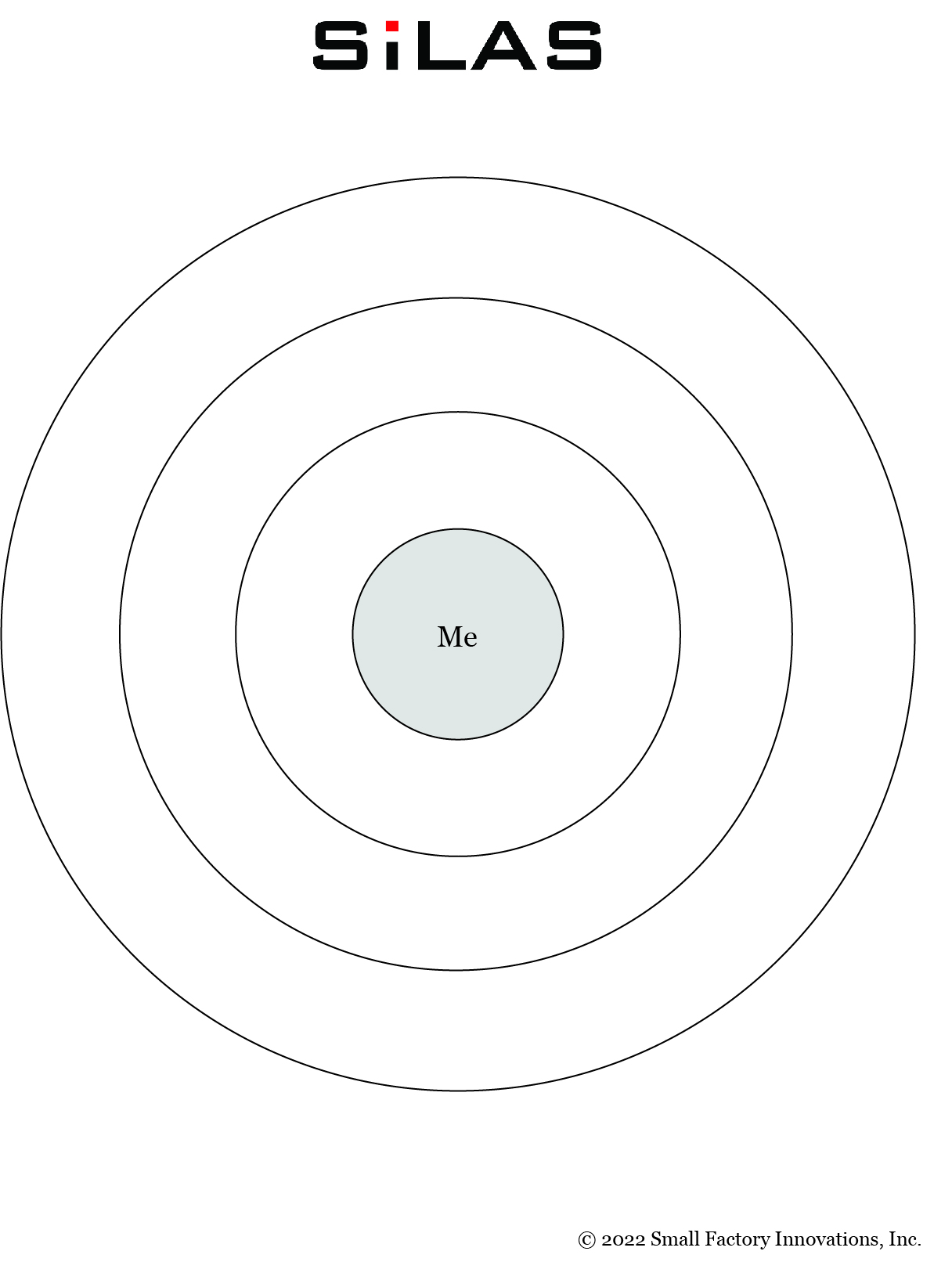
Improve life outcomes
Jumpstart: Personal Space - Universal
Foundtional
CASEL Competency Focus: Social Awareness
Time: 20-30 minutes
Materials: Concentric Circle Handout, Chart Paper/Board, Writing Utensils
Objectives:
1. Define Personal Space In Your Own Words.
2. Maintain Personal Space/Social Distancing From Peers and Adults.
3. Ask and Receive Permission Before Hugging or Touching Peers and Adults.
Speaking and Listening
Language Writing
Definitions of Key Terms:
- Acquaintances: Someone you know but not very well
- Personal Space: The amount of space around a person’s body that makes them feel comfortable
Lesson Procedures
Introduction: Personal space is different for all of us. Our comfort level with how close someone is to us depends on our relationship with the person. Review the above terms with students. Discuss that each of us have our own invisible circles around us. The size of the circles and those “invited” into those circles are different for all of us. The better we know a person and our feelings toward that person determine what circle they belong. Most often, we allow our family members to be in closer proximity (the small circle closest to us) than others in our life. Our friends, extended family, and others important in your life are likely to be in the second circle. This circle is bigger and further away from us. Acquaintances and people we don’t know are often in the biggest circle, the furthest from us. Explain it is up to YOU to decide how close someone can get to us. It is not okay if a person is getting closer to you than you like. There are certain phrases we can teach students to say when someone is making us uncomfortable. Examples of these phrases include; “Could you please take a few steps back?” “I am uncomfortable with how close you are to me.” Mention that there are some exceptions for people entering our closest circle. These exceptions include doctors, dentists and others trying to help us. Use the following activities to help students gain a better understanding of personal space.
Game Time: Red Light! Green Light!
A good way to practice and understand personal space is to play an adaptation of Red Light! Green Light! In this version students will get to be in charge of the space between them and the other person. Divide the class into two equal groups. If you have an uneven number consider partnering with the remaining students. Have the first group form a straight line an arm’s length apart from the person’s shoulder beside them. Instruct the second group to stand across a person in the first group. The distance between the two lines should be considerable. Explain that in this game of Red Light! Green Light! the person standing across from them will be taking steps toward them. With each step the person takes, the other person decides whether to say green light if you are comfortable with them taking another step closer to you. As soon as the person is getting too close, shout out, “Red light!” The other person must stop. Have everyone stay where they are until the last person says red light. Have students look around. What do they notice? Is the distance between partners the same for everyone? How did it feel to walk toward the person? How did it feel having someone walk toward you? Discuss other ways besides red light to let a person know they are getting too close. Switch partners and repeat the activity. This time, allow students to pick their own partner. Instead of saying red light, have them repeat a practiced phrase. When everyone has taken their last step, have students take a look at the distance between pairs. Ask students how the second round was different from the first? Did choosing your own partner make a difference in how close you allowed them? Why?
*Follow your school’s social distancing rules while playing the game.
*If you know of a child who might not be chosen by another student, consider partnering up with them or strategically pairing them up with a classmate.
Application:
(Primary and Secondary) Using chart paper or the board draw what looks like a target on the board. Label the “bullseye” me. The next concentric circle should surround the bullseye leaving some space. The next circle in the target should be larger. Repeat drawing a bigger circle around the last. As a class, identify specific people we allow in each circle. Discuss the relationship within each circle. Then using the handout provided, have each student fill in their own personal space circles. Discuss as time allows.
Try it out!
Have students choose a location they would like to observe others. Some settings could include lunch, recess, or home. What do they notice about how close people are standing? Is the distance different depending on location?
